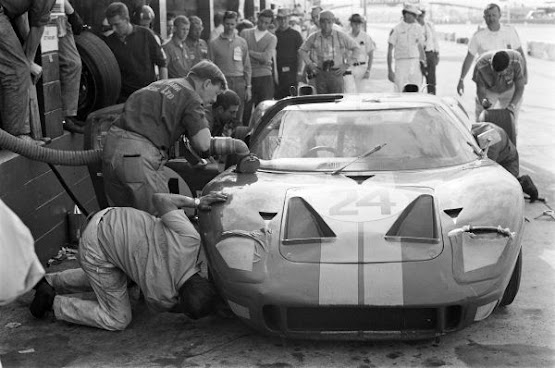Cesspool (pronounced ses-pool)
(1) A cistern, or sump for the temporary retention of the sediment of a drain or for receiving the sewage or waste-water from a house or
other building; also called a sink.
(2) As a casual description, any filthy receptacle or
place.
(3) By extension, any place of corruption, iniquity, moral
filth, depravity or immorality:
1670s: From the early Modern English cess-pool & sesspool (cistern
or well to receive sediment or filth). The
origin is (perhaps expectedly) murky. It
may be from the Italian cesso (privy)
from the Latin secessus & rēcessusrecess (“place of retirement”
and, in Late Latin "privy or drain") documented in English since the
1580s. It seems convincing because the dialectal
form was suspool, from suss & soss (puddle; mire) or cess
(a bog on the banks of a tidal river). Another
theory of the seventeenth century shift involves the influence of the French cesperalle, an alteration of the Middle
English suspiral, from the Old &
Middle French souspirail (air hole; a
vent for air) from soupirer & souspirer (to sigh, breathe), from the Latin
suspirare. Other speculation is it may have been either an
alteration of cistern or a shortened form of recess or the whole may be an
alteration of the (circa 1400) suspiral
(drainpipe), from the Old French sospiral
(a vent, air hole) from sospirer (breathe)
from the Latin suspirare (breathe
deep). The fact the meaning extended to
"tank at the end of the pipe," does make plausible a possible
folk-etymology change in final syllable.
Gongpit was the most
attractive of the nicknames, most of the others predictably more overtly scatological.
Pool is from the Middle English pool, pole & pol,
from the Old English pōl (pool), from
the Proto-Germanic pōlaz (pool, pond),
from the primitive Indo-European bōlos
(bog, marsh). It was cognate with the Scots
puil (pool), the Saterland Frisian Pol (pool), the West Frisian poel (pool), the Dutch poel (pool), the Low German Pohl & Pul
(pool), the German Pfuhl (quagmire, mudhole), the Danish pøl (puddle), the Swedish
pöl (puddle, pool), the Icelandic pollur (puddle), the Lithuanian bala (bog,
marsh, swamp, pool), the Latvian bala (a muddy, treeless depression), the Russian
боло́то (bolóto) (swamp, bog, marsh).
Cesspit (pronounced ses-pit)
(1) A pit for the temporary retention of the
sediment of a drain or for receiving the sewage or waste-water from a house or
other building; also called a sink.
(2) As a casual description, any filthy receptacle or
place.
(3) By extension, any place of corruption, iniquity, moral
filth, depravity or immorality:
1860–1865, the construct being cess + pit. Pit is pre-900, from
the Middle English pit, pet & püt, from the Old English pytt, from Proto-West Germanic puti, from the Latin puteus (trench, shaft, pit, well), the
verb derivative of the noun; that seems the consensus although many
etymologists note the some phonetic inconsistencies. The unrelated use as a verb, as pit, pitted,
pitting in the sense of removing the pit from a fruit or fruits is an Americanism
from 1835-1845, influenced both by pith and the Dutch kernel.
Cesspits, cesspools, and the swamp
A cesspit.In modern plumbing, cesspits, cesspools and septic tanks
are alike in construction, none being connected to a main sewer system, the
difference being cesspools and cesspits do not include a treatment system. Pre-war English legislation best illustrates
the difference between cesspits and cesspools which, prior to the Public Health Act (1936), were different
things. Cesspits resembled wells, circular
brick chambers built about 6 feet (1.8m) deep in the ground, acting like a
soakaway. The design was flawed because
the drains would eventually back up so the Public Health Act prohibited the use
of cesspits, requiring other drainage methods to be used so after 1936, only cesspools
and septic tanks were installed but, other than professional plumbers or public
health specialists, few noticed or cared much to explore the difference so,
among the public, cesspit and cesspool came to be used interchangeably and
thought to mean much the same thing.
A cesspool.
A modern cesspool is a watertight, fibreglass storage
tank which holds sewage and is stored underground in a pit. It does not have an
outlet or any apparatus to carry out any treatment process, the only piping being
that connect to a relief valve which prevents any build-up of hazardous gasses. Cesspools thus demand regular emptying by a
licensed waste disposal company, which is why they’re now usually only a temporary
solution. The frequency with which they
must be emptied differs and is predictably dictated by the variables: the size
of the tank, and the volume of material it receives, calculations based usually
on the number of people serviced by the unit.
Cesspools are normally used in locations which don’t have access to
mains drainage, holiday homes, camp sites and places where the discharge of
effluent into the ground is not possible because of unsuitable soil. Although not always required by local ordinances,
cesspits should be fitted with an alarm that notifies when the tank is approaching
capacity, manufacturers caution it’s not advised to open the lid to check the
level because noxious gasses will be emitted, unpleasant at least and potentially
hazardous if inhaled.
A septic tank.
A septic tank is similar to a cesspit, the tank construction almost identical and also installed underground and not connected to a main sewer system. Where a septic tank differs is in being a component of a sewage treatment system where the wastewater, or effluent, drains into a soakaway after treatment. The tank has two or three chambers which separate waste into liquids and solids, and then the liquids (effluent) move through an outlet into a soakaway chamber or drainage system. A soakaway, known also as a drainage field, is a system of piping which is designed to spread liquids evenly into the surrounding soil. To avoid blockages, septic tanks need annually to be emptied of the residual solid waste, again a task which should be undertaken only by a professional. In the modern, urban environment, cesspools should really be regarded a temporary device because they’re not only expensive to maintain bur are a potential contaminant as untreated effluent can overflow into the surrounding environment. Septic tanks have a treatment system and are thus safer but are still a compromise and the most economic and convenient option is, wherever possible, connect to a mains system.
Washington Post, 13 December 2016.
Because of the stench and squalor summoned by the imagination whenever the words cesspit and cesspool are mentioned, they’ve long been a favorite piece of imagery when speaking of corrupt or morally bankrupt assemblies of politicians or other self-interested souls. Despite the technical differences in the plumbing arrangements, when used figuratively, cesspool and cesspit are interchangeable, the choice depending only on which best suits the rhythm of the sentence in which it appears. Both describe a place hidden from view where sewage gathers, a pool full of nastiness, a place swimming with grubs and corruption. The attraction of using it when speaking of politics is obvious but Donald Trump (b 1946; US president 2017-2021), in the 2016 presidential campaign instead choose the catchy phrase “drain the swamp” to express much the same idea. When in office, there was scant evidence of any drainage although he certainly took the opportunity to toss into the swamp a few creatures of his choice. He did at least mention the problem, something which few professional politicians have ever been interested in doing but the swamp-like nature of electoral politics is a product of incumbency and the more prolonged the longevity, the greater the opportunity further to rig the system to gain even more time in the swamp while gorging at the trough (an unfortunate mix of metaphors but a vivid image). The core value of democracy is the election but perhaps its most corrupting aspect is the re-election. Were term limits introduced, preferably as single terms of a reasonable length, perhaps four years, one of the great drivers of political corruption would be removed. It should be assumed this will never be done.
The notion of Donald Trump cleaning up the cesspool of corruption in politics was one idea. There have been other suggestions.












